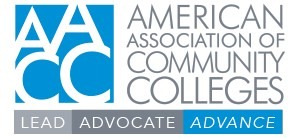Like you, I have been inundated with messages about the current situation and managing the rapidly changing landscape of our new normal. I want to assure you that AACC is working to ensure that your voice continues to be heard in Washington, DC, and that we have a seat at the table as interventions are planned and implemented regarding resources, policies, and practices for our community colleges.
I have been in regular contact with members of The Six Higher Education Associations and we will continue to coordinate advocacy and communication efforts. Today, ACCT President Noah Brown and I held a joint meeting of the AACC and ACCT boards to discuss high-priority concerns and hear from U.S. Department of Education officials. We will continue to work with them to ensure that we are in lockstep as we navigate the current issues and prepare for recovery efforts that are in the best interest of community colleges and their students.
Stimulus Packages
Congress has passed two bills to address the pandemic. These bills made important changes to the Family and Medical Leave Act and the SNAP program. However, the most important legislation by far is now pending in Congress, the third stimulus ‘‘Coronavirus Aid, Relief, and Economic Security (CARES) Act,’’ that is locked up in the Senate as of today, March 23. That legislation as advanced by Senate Republican leadership includes approximately $300 million for Title III and Hispanic-Serving Institutions and $100 million for dislocated working training.
The bill also includes a $20 billion education fund, slightly less than $6 billion of which would be equally divided between higher education institutions and students. While the mechanism for delivering this assistance is largely based upon enrollment numbers for Pell Eligible students, the proposed $6 billion is not adequate to meet the needs of all higher education. Community college students and institutions alone need more assistance than that. The package also suspends student loan payments for six months and relaxed many of the rules pertaining to federal student aid.
Democrats in the House of Representatives have just offered their version of stimulus legislation. It creates a State Fiscal Stabilization Fund for education and provides significant institutional assistance as well. We will be providing further information on this legislation shortly.
Act Now
We are focusing on three priorities and ask you to communicate the following to your legislators as soon as possible:
At Least $50 billion of Emergency Financial Aid to Students and Support for Institutions: The federal government needs to immediately provide support to institutions to weather this storm. The Pell Grant distribution system should be used to deliver aid, based on a measure of Pell recipients and enrollments, but with more emphasis on the enrollment of needy students as reflected in the Pell Grant population.
At least 25% of these grants must be delivered as emergency aid to students. Community college students need help both to deal with changes in their work and family situations, as well as to absorb the costs of taking more courses online. Currently, there are many community college students who have not been able to make the immediate transition to online learning because of a lack of resources, including connectivity.
To help colleges make a transition to online education, a separate technology program that ensures funds are provided as quickly as possible will be necessary. This could be accomplished through the Title III-A, Strengthening Institutions program, but there are other vehicles that could also be utilized.
$1 Billion For Two Years For Community Colleges to Train Individuals to Meet Current Necessities and to Heal the Crippled Economy: Community colleges are well positioned to help meet the immediate increased demands for health care professionals. COVID-19 will likely remain a threat to public health for at least another year. With targeted assistance, community colleges can help meet the demand for greater numbers of nurses and allied health professionals that will undoubtedly be needed.
It is impossible to predict the full extent of the abrupt economic downturn. However, it is certain that, with millions of individuals rendered unemployed and businesses closing doors, the nation will need to rebuild economically in the coming months. Community colleges are critical to help build a strong economy and address the pronounced skills gap that emerged in recent years. The sector supports a program modeled on the highly successful Trade Adjustment Assistance Community College and Career Training Program, or the Strengthening Community College Training Program, created in last year’s appropriation legislation. An investment of $1 billion per year for at least two years would sustain a vital workforce education program connected tightly to business.
Help Stabilize State Support for Institutions of Higher Education: State budgets are headed for tremendous shortfalls, and by law they must be balanced each year. In this process, community colleges are inevitably subject to deep reductions because they are often perceived to be more “discretionary” than heath care, prisons, and other types of expenditures. Congress should establish a State Higher Education Fiscal Stabilization Fund to help colleges manage this extreme financial stress. A similar fund was created in 2009 and it provided a lifeline for colleges at a time when they were hemorrhaging revenues and forced to lay off hundreds of faculty and staff. State budgets will likely absorb an even greater shock in the coming weeks and months, and colleges need to be enabled to continue vital operations.
Feel free to use this language in your communications to legislators and let us know if you have any questions. As you are aware, things in Washington, DC, are fluid and rapidly moving. We will continue to keep you updated as needed.
Sincerely,
Walter G. Bumphus, Ph.D.
President and CEO
